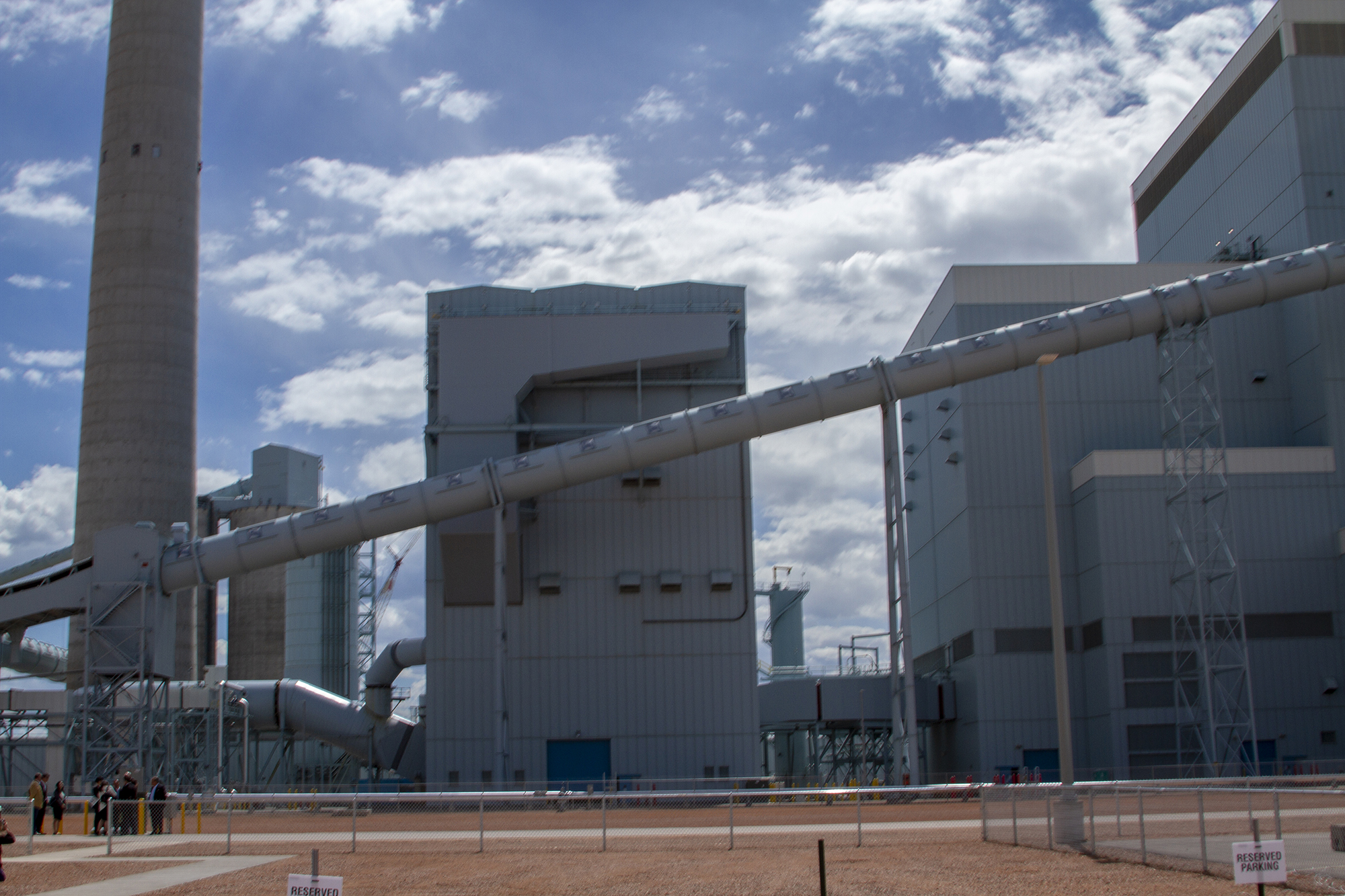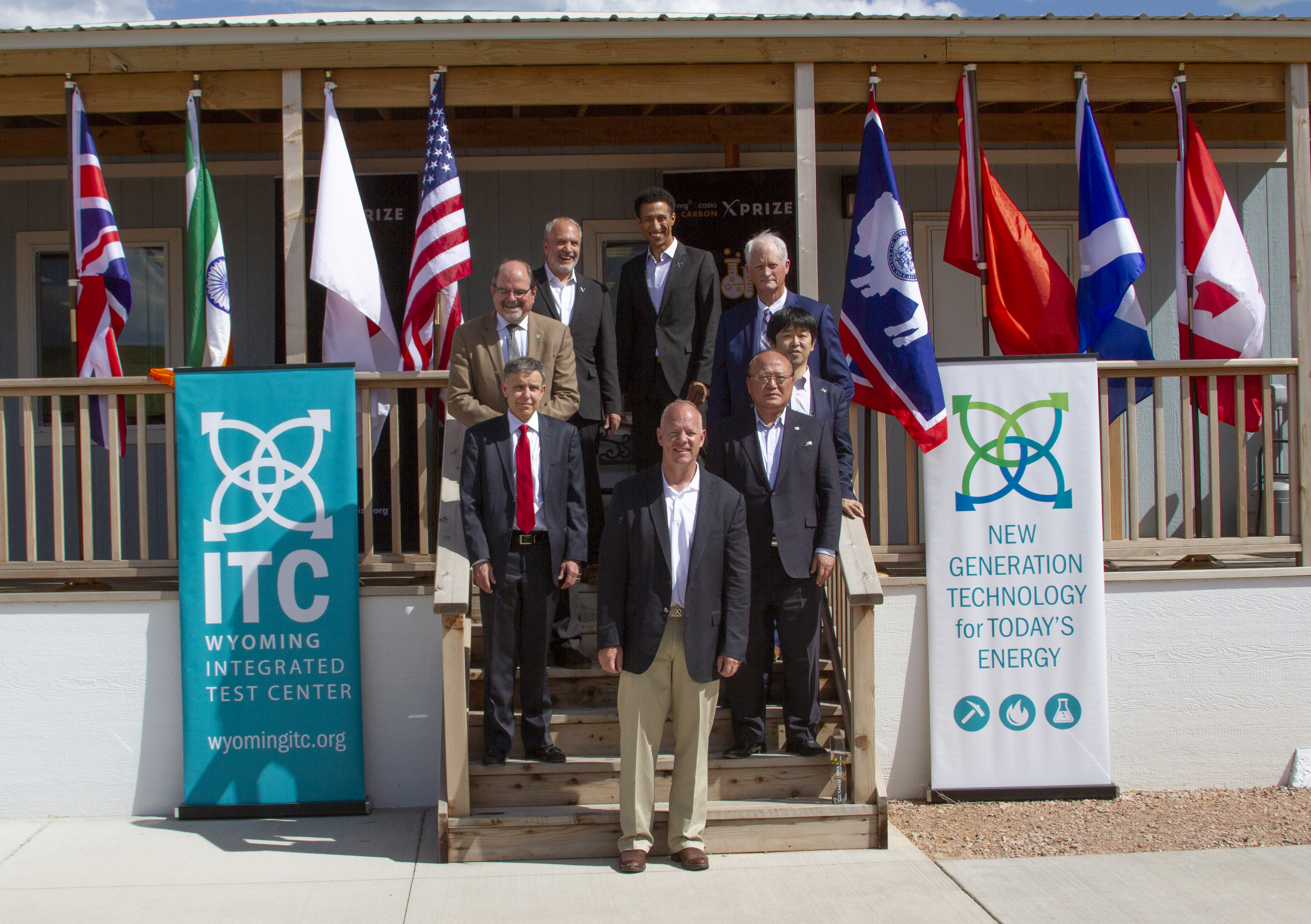
Research getting under way at an electric co-op power plant in Wyoming could lead to game-changing breakthroughs diverting carbon dioxide from the power generation waste stream to manufacturing processes for use in new products.
“This is not a lab; it’s a facility where testing will take place in ‘real world’ conditions,” Gov. Matt Mead told an audience of about 150 attendees during a dedication ceremony for the Wyoming Integrated Test Center on May 16.
Mead’s comments topped a nearly decade-long quest for creation and development of a facility designed to advance technologies that expand the use of CO2 as a marketable byproduct with commercial value.
Bulk Waste to Useful Products
The facility, which takes on its first tenants this summer, is located at Basin Electric Power Cooperative’s Dry Fork Station. The 385-megawatt power plant commissioned in 2011 is one of the most modern coal-based generation facilities in the electric cooperative fleet.
Bismarck, North Dakota-based Basin Electric is majority owner and operator of the plant, which is co-owned by the Wyoming Municipal Power Agency.
With the encouragement of electric cooperative officials, including representatives of Basin Electric, Tri-State Generation and Transmission Association and NRECA, Wyoming legislators approved $15 million for the project. The investment is seen as a way to preserve and support coal production as the state’s top industry by reducing or eliminating concerns about CO2 emitted through fossil fuel use.
“This is about saving coal and making coal viable for America,” says Paul Sukut, CEO of Basin Electric, adding that even as renewable energy and natural gas use expands, coal remains an abundant and reliable resource. “We need in America an ‘all of the above’ energy solution.”
Emissions from up to 20 MW of energy production will be diverted to a ported vent system feeding five small test bays and one larger working facility at the ITC. Researchers will be able to draw CO2 from that waste stream for industrial-scale production use.
The nonprofit XPRIZE Foundation, headquartered in Culver City, California, is using the Dry Fork Generation Station as one of two test sites for the NRG COSIA Carbon XPRIZE. Participants have been competing for a total of $20 million in prize money since 2015.
Westminster, Colorado-based Tri-State G&T began developing the concept for a carbon inducement prize and test center eight years ago and has contributed $5 million to the ITC project.
“Early on, we identified promising activity in the nascent field of carbon utilization and the need to provide venues for innovators to bring new technology forward,” said Ellen Connor, Tri-State senior vice president and chief technology officer.
“The technology acceleration from the XPRIZE and creation of a test center at an operating coal plant will make an impact on both the speed and scale of development and demonstration of these important technologies,” Connor said.
NRECA has also contributed $1 million to development of the ITC in support of the association’s commitment to a national energy policy recognizing electric generation diversity that includes fossil fuels and renewables.
“If there is a carbon constraint in the future, it’s going to hit natural gas as well,” says Jim Spiers, senior vice president of NRECA’s Business and Technology Services department.
Spiers, formerly Tri-State’s senior vice president of business strategies and chief technology officer, worked to identify institutions, companies and individuals committed to the carbon waste issue and found 135 entities worldwide are studying the issue.
According to the Energy Information Administration, coal-based electricity generation produced more than 1.2 million metric tons of CO2 in 2016. That number accounts for 68 percent of the total CO2 emissions from the energy sector.
Forty-one percent of the power used by electric cooperative members is produced through coal-based generation. Co-ops also rely heavily upon natural gas to operate peaking plants, run primarily during periods of high demand.
“As co-ops across the nation work to meet tomorrow’s energy needs, this project is poised to crack the carbon code and create a new future for managing carbon dioxide emissions,” Spiers added. “The Wyoming ITC is proof that public-private partnerships spur innovation.”
Facilities related to the ITC project now occupy 226,000 square feet of space at the Dry Fork site. While the five test bays used by the Carbon XPRIZE finalists will share access to flue gas produced by 1.5 MW of generation capacity, a separate large test center can use up to 18.5 MW of flue gas flow.

Promising Paths
The 10 teams in the juried research competition designed to advance clean energy technologies are divided equally between the coal-based ITC test site and Canada’s Shepard Energy Centre in Calgary, Alberta, where the Alberta Carbon Conversion Technology Centre is fueled by natural gas.
The five teams conducting research at ITC include:
- Breathe: Based in Bangalore, India, they will combine hydrogen compounds, extracted from water, with CO2 to produce methanol. Researchers will use a variety of catalysts, including copper, nitrogen and iron to gauge the economic viability of commercial scale production.
- C4X: The Suzhou, China-based team will use CO2 extracted from flue gas to develop new foam-based bio composite plastics for potential use as insulating and building materials.
- Carbon Capture Machine: The team, headquartered in Aberdeen, Scotland, will dissolve CO2 in a mixture of brine, calcium and magnesium to produce carbonate solids as an additive for building materials, replacing other carbon-based feedstocks in the manufacture of concrete.
- CarbonCure: The team, led by researchers from Dartmouth, Canada, will use CO2 to produce materials described as “greener concrete” using current manufacturing processes and modified chemistry to reduce water and CO2 use in concrete fabrication.
- Carbon Upcycling UCLA: The Los Angeles-based team will attempt to scale up production of a concrete material that absorbs CO2 during the production process, bonding with limestone for use in construction.
Researchers working the natural gas track in Alberta will conduct production scale testing on plastics, concrete alternatives, new building compounds and nanoparticles for use in bioplastics and other products. The 10 semifinalists shared $5 million awarded in April.
Beyond Research
After 10 months of production, XPRIZE judges will consider factors including operational costs, total production and net reduction of CO2 waste as factors in awarding $20 million in prize money. Winners from the two test sites will split the proceeds.
Kawasaki Heavy Industries, working with the Japan Coal Energy Center on a solid sorbent-based carbon capture technology, is the first tenant for the larger space at the ITC. Up to $9 million will be spent on the project, which will use sorbent as a low-cost carrier to absorb CO2 for later use as manufacturing feedstocks.
“The work of JCOAL and Kawasaki, along with the other Carbon XPRIZE teams, positions the Wyoming ITC as a world-class facility for testing carbon management technologies,” said Mead.
“We continue to move the needle forward on advanced carbon technologies and find real-world solutions to capturing carbon emissions,” said Jason Begger, executive director of the Wyoming Infrastructure Authority. While Basin continues to operate Dry Fork Station, the authority is serving as the managing entity for the ITC.
Derrill Holly is a staff writer for NRECA.